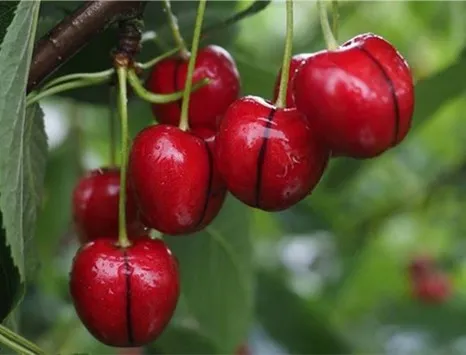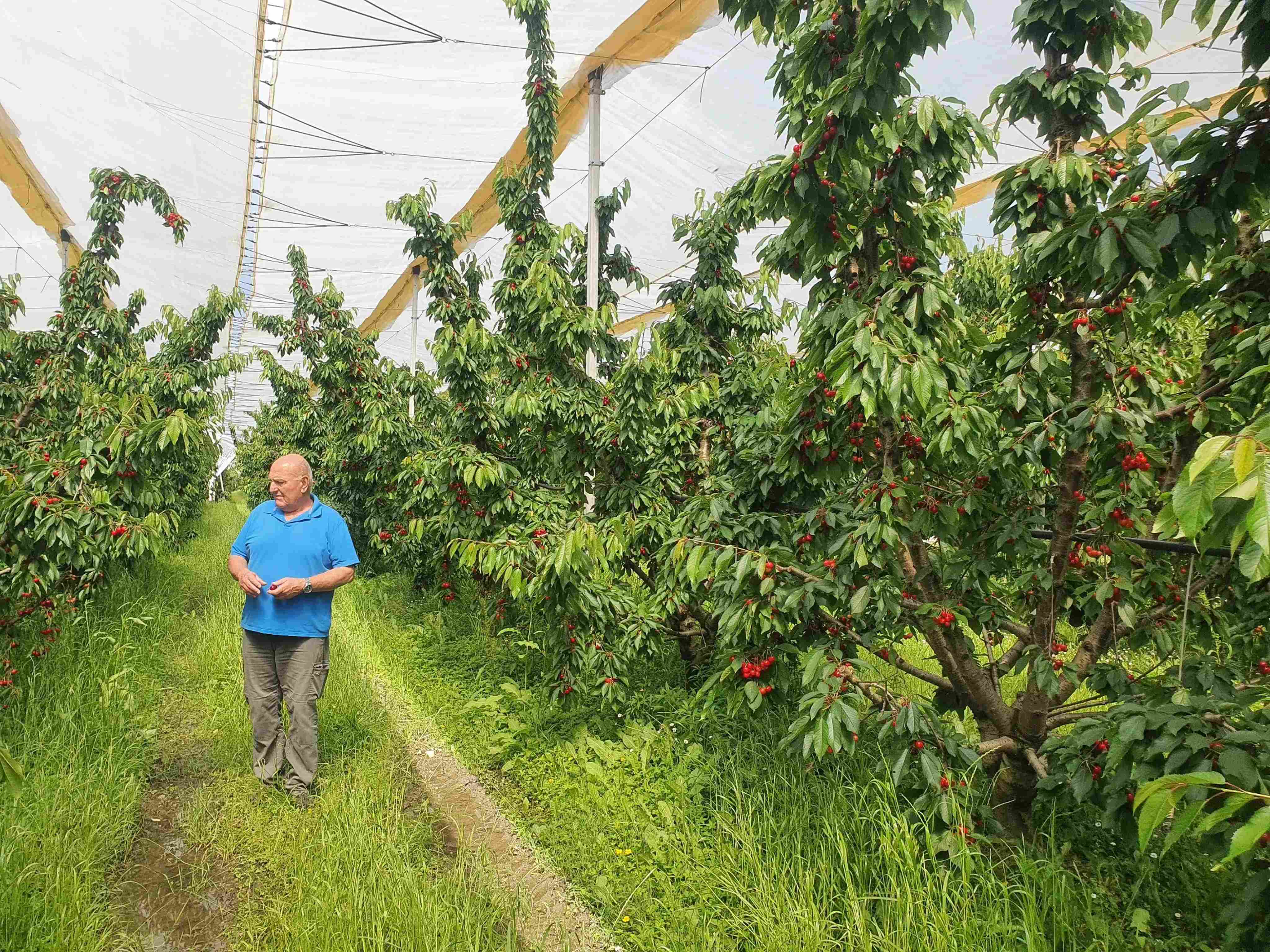The fruit grower Gerhard Och, like his father and soon also his son, runs a small fruit farm in Pfarrweisach in Franconia (Germany). Behind the beautifully preserved half-timbered house, he cultivates hundreds of trees of the sweet cherry variety Regina.
It is one of the best varieties in the world because its late-ripening fruits are large, firm, crunchy, aromatic, and wonderfully sweet. In short, Regina is the emblem of a tasty cherry, and for this reason, it is widely cultivated in Franconia.
At the time of the harvest, the whole family helps to pick the fruit. One day, Gerhard Och noticed that a branch of a Regina tree had fruits of a lighter color than the others and featured a black stripe along the ventral suture. He had never seen anything like it. Gerhard had discovered a so-called mutation, which is a spontaneous change in the genetic makeup of a living organism.

A stable chimeric mutation
Mutations are one of the driving forces of the evolution of life on Earth. Through them, new forms of plants and animals are created randomly and indirectly. Sometimes these mutations are not stable, and the mutated trait does not last long. This stability of the chimeric mutation has been verified in the striped cherry.
The fact that Gerhard Och was among the millions of Regina trees that exist worldwide and found this mutation is a great coincidence. But fortune favors the brave. And he also had a keen eye—other farmers probably would not have noticed the twig with the special fruit, and the mutation would not have been identified.
Why is the cherry variety called Natalie?
Gerhard Och contacted Michael Neumüller from the Bavarian Fruit Center. They were also very enthusiastic about his discovery, and after further rigorous testing over five years, they began developing virus-free propagation material and applying for plant variety protection as BayOZ-R-GO. The first trees were delivered in 2020. We are happy to have fulfilled one of Mr. Och's wishes. The new sweet cherry variety was named Natalie®, which is also the name of his granddaughter.
Natalie® fits into any cherry orchard. The tree of Natalie® grows like Regina, only the fruit has a different appearance. It is an attraction in every orchard. The recommended pollinator varieties are 'Sylvia' or 'Kordia'. The fruits ripen late (mid to late July), are very large, with firm flesh and slightly aromatic. The flesh is yellow, only under the black stripe it is dark red, from the skin to the pit. A true freak of nature that can only amaze!

Natalie® - variety description
Origin: mutation of the well-known sweet cherry cultivar Regina, discovered by fruit grower Gerhard Och in Pfarrweisach (Franconia). Plant variety rights holder: Bayerisches Obstzentrum Hallbergmoos, Dr. Michael Neumüller.
Tree: exactly the same characteristics as Regina.
Flowering and pollination: very late flowering. Alleles S S1S3. Any variety suitable for Regina can be used for pollination. Please refer to local recommendations for pollinators. In Germany, the following varieties are often used for cross-pollination: Karina, Sylvia, Irena, Schneiders, Skeena, Rubin, Sam, sometimes Kordia. The same cultivar, Regina, cannot be used for pollination because Natalie® is its mutant and has the same alleles.
Fruits: ripening from late to very late. Red skin, of medium red color. A small stripe starting from the stalk and following exactly the ventral suture is dark red or almost black. This makes the fruit unique. The fruit flesh is yellow, only the pulp tissue between the black stripe and the pit is colored red. In all other aspects, such as size and flavor, the fruits are identical to those of Regina.
Source: Michael Neumüller, Bayerisches Obstzentrum, Hallbergmoos (Germany)
Images: Michael Neumüller, Gerhard Och
Cherry Times - All rights reserved














